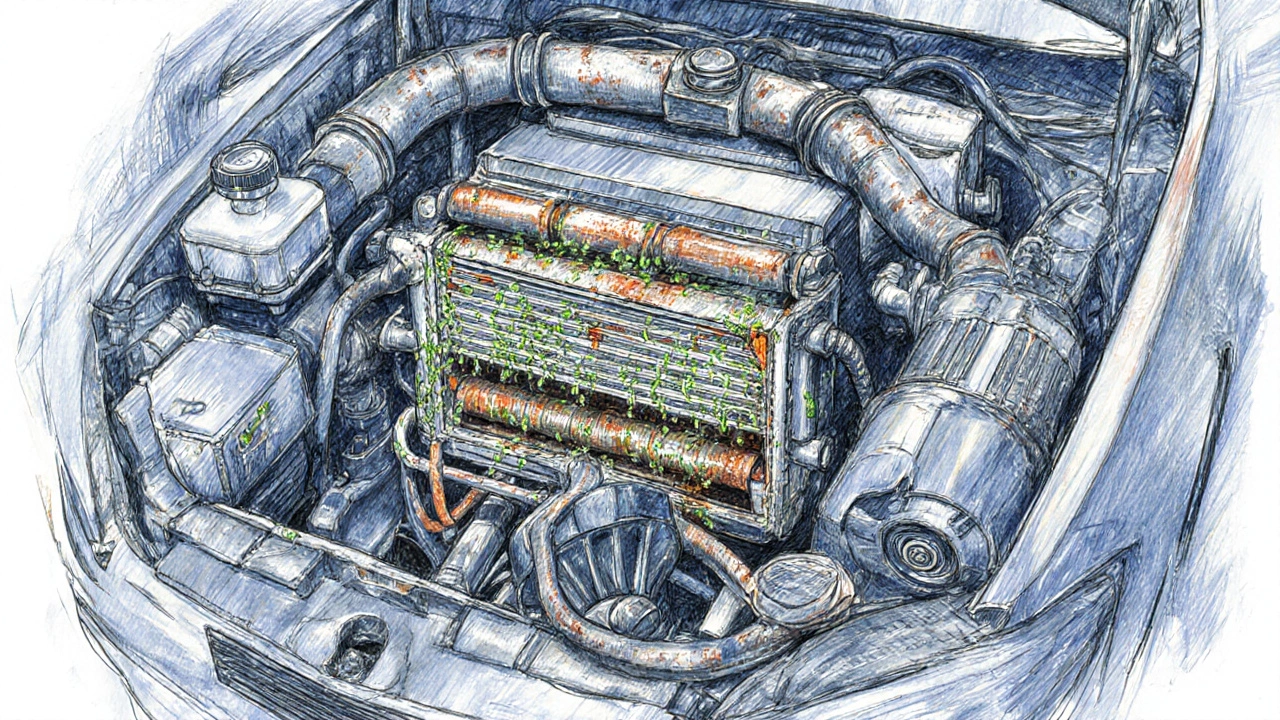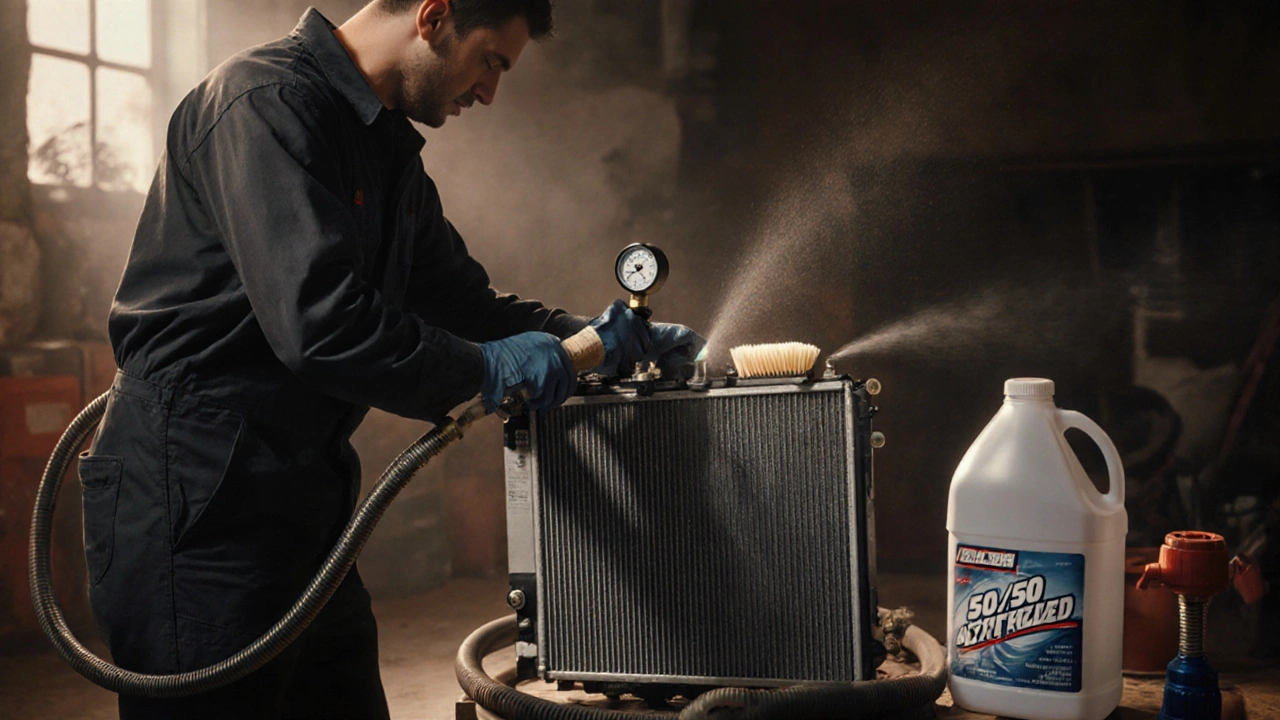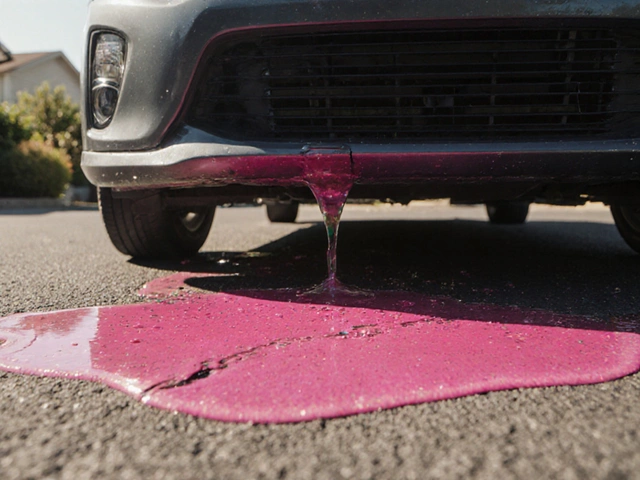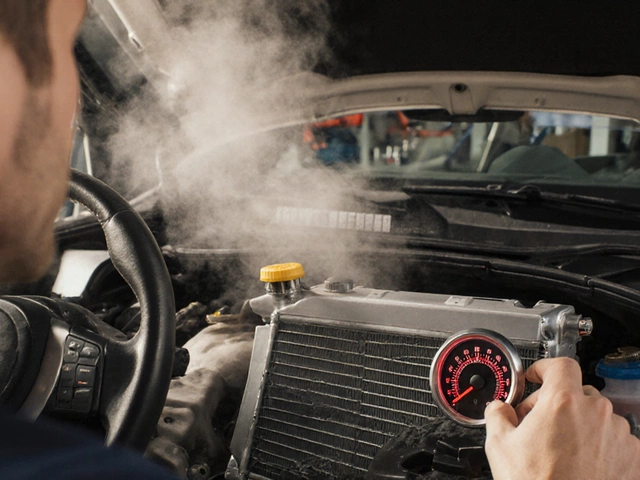Radiator Failure Diagnosis Tool
Select Your Symptoms
Potential Causes
Corrosion
Pitting leaks, rusty fluid
Coolant puddle Coolant level dropsHose/Cap Leak
Coolant puddles, low level
Coolant puddle Coolant level dropsBlockage
Engine runs hot, fan runs constantly
Temperature gauge rises Radiator fan doesn't turn onThermostat Stuck Closed
Rapid temperature rise
Temperature gauge risesWater Pump Failure
Coolant not circulating, overheating
Temperature gauge risesFan Malfunction
Hot radiator, low airflow
Radiator fan doesn't turn onWhen your engine starts to overheat, the first thing most drivers think of is a broken car radiator a heat‑exchanger that transfers engine heat to the air flowing through its fins. But the root of the problem can be anything from a tiny leak to years of corrosion. Understanding the why behind car radiator failure helps you spot trouble early, avoid costly repairs, and keep your ride running smooth.
Key Takeaways
- Most radiator failures stem from corrosion, leaks, blockages, or cooling‑system component wear.
- Early warning signs include rising temperature gauge, steam, coolant odor, and uneven heating.
- Regular checks of coolant level, condition, and pressure, plus a yearly flush, dramatically cut failure risk.
- When a failure occurs, weigh repair versus replacement based on age, damage extent, and cost.
- Using the right coolant mix for your vehicle’s climate and specifications prevents many common problems.
How a Car Radiator Works
The cooling system is a closed loop that moves heat away from the engine. Hot coolant leaves the engine block, flows through the radiator core, and releases heat to the surrounding air. A thermostat opens at the right temperature to let coolant circulate, while a water pump pushes the fluid through the system. The radiator cap maintains system pressure, raising the coolant’s boiling point. Finally, the coolant a mixture of water and antifreeze that absorbs engine heat returns to the engine, completing the cycle.

Top Reasons Radiators Fail
Below are the most common culprits. Knowing each helps you diagnose the issue without a guess‑work approach.
- Corrosion and Rust - Over time, moisture and acidic coolant break down the metal. Aluminum radiators develop pitting; plastic tanks crack.
- Coolant Leaks - Leaks can originate from cracked radiator tanks, failed hose seals, a loose cap, or a blown head gasket.
- Blockages - Dirt, rust particles, or sludge from old coolant can clog the tiny fins or core tubes, reducing heat transfer.
- Thermostat Malfunction - If the thermostat sticks closed, coolant can’t reach the radiator, causing the engine to overheat.
- Water Pump Failure - A seized pump cuts flow, starving the radiator of hot coolant.
- Fan or Fan‑Clutch Issues - Electric fans that don’t engage or mechanical fan‑clutches that slip leave the radiator without enough airflow.
- Improper Pressure - A cap that’s too low lets coolant boil; one that’s too high can burst the radiator.
- Age‑Related Fatigue - After 8‑10 years, even well‑maintained radiators develop micro‑cracks from thermal cycling.
Early Warning Signs of Trouble
Spotting symptoms early can save you from a roadside breakdown.
- Temperature gauge creeping above normal or a warning light.
- Visible steam or a sweet, antifreeze smell from under the hood.
- Puddles of green, orange, or pink fluid on the ground where you park.
- Coolant level dropping quickly after a short drive.
- Radiator fan not turning on when the engine is hot.
- Uneven heat from the cabin heating vents.
Prevention & Maintenance Checklist
Stick to this routine to keep your cooling system in top shape.
- Check coolant level weekly; top up with the correct mix (50/50 antifreeze‑water for most temperate climates).
- Inspect hoses and clamps for cracks, bulges, or softness every 6months.
- Look at the radiator cap for corrosion or a worn spring; replace every 2years.
- Perform a pressure test at least once a year to spot internal leaks.
- Flush and replace coolant according to the manufacturer’s interval (typically every 30000km or 2years).
- Clean the radiator fins with a soft brush and compressed air to maintain airflow.
- Listen for abnormal fan noises; verify that the electric fan activates at the correct temperature.
- When the vehicle sits unused for long periods, add a corrosion inhibitor to the coolant.

What to Do When Failure Happens
If you’ve identified a problem, here’s how to decide between repair and replacement.
- Minor Leak - Small hose or cap leaks are inexpensive to fix (under £30). Replace the offending part.
- Core Leak - If the radiator core is leaking, a professional rebond or sealant can work for older cars, but long‑term reliability may be compromised.
- Severe Corrosion or Cracks - For radiators older than 8years with extensive damage, replacement is usually the safest bet. Expect £120‑£250 for a standard aluminum unit.
- Component Failure - Faulty thermostat, water pump, or fan should be replaced individually; this often restores performance without swapping the radiator.
Always reset the engine’s coolant temperature sensor after a repair to avoid false warnings.
Comparison of Common Failure Causes
| Cause | Typical Symptom | Prevention Method |
|---|---|---|
| Corrosion | Pitting leaks, rusty fluid | Use correct coolant mix; flush every 2years |
| Hose/Cap Leak | Coolant puddles, low level | Inspect hoses and cap quarterly |
| Blockage | Engine runs hot, fan runs constantly | Flush coolant; clean fins annually |
| Thermostat stuck closed | Rapid temperature rise | Replace thermostat at scheduled service |
| Water pump failure | Coolant not circulating, overheating | Check pump bearing noise; replace if noisy |
| Fan malfunction | Hot radiator, low airflow | Test fan operation after each oil change |
Frequently Asked Questions
How often should I flush my car radiator?
Most manufacturers recommend a coolant flush every 30000km or every 2years, whichever comes first. If you drive in salty coastal areas or use low‑quality coolant, flush annually.
Can I drive with a leaking radiator?
A small leak that loses only a cup of coolant may let you reach a garage, but you risk severe engine damage. Turn off the engine as soon as the temperature gauge spikes and call for assistance.
What coolant mix is best for the UK climate?
A 50/50 mix of ethylene‑glycol antifreeze and distilled water works well across the UK’s mild winters and summers, providing freeze protection down to -34°C and a boil point above 108°C under pressure.
Is a radiator fan clutch the same as an electric fan?
No. A fan‑clutch is a hydraulic device that engages the mechanical fan based on engine temperature, common on older diesel engines. An electric fan uses a motor and a temperature sensor, typical on modern petrol cars.
What are the signs of a failed thermostat?
If the thermostat sticks closed, the engine will overheat quickly and the temperature gauge will jump. If it sticks open, the engine may run too cool, causing poor fuel economy and heater issues.

